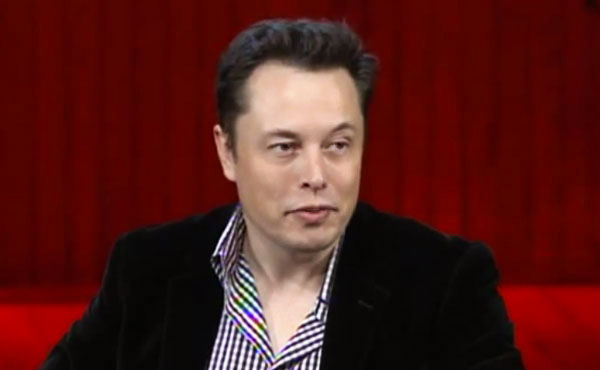SpaceX, the space transport services company founded by billionaire entrepreneur Elon Musk, has raised US$1 billion in funding from Google and Fidelity Investments.
Together, they will together own almost 10 percent of SpaceX.
Investors already holding stakes in SpaceX are Founders Fund, Draper Fisher Jurvetson, Valor Equity Partners and Capricorn.
Musk last November confirmed that SpaceX was developing advanced micro-satellites operating in large formations and would make an announcement in two to three months.
Musk last week told Bloomberg Businessweek that he planned to launch a network of communications satellites orbiting Earth to speed up Internet traffic and provide high-speed, low-cost Internet access around the world.
In the long run, the SpaceX Web might stretch to Mars, which Musk is determined to help colonize. That could cost $10 billion to achieve, he said.
“Musk is serious about his long-term goal, which is putting people on Mars, and we’ll need interplanetary communications for that,” Frost & Sullivan Stratecast Program Manager Mike Jude told the E-Commerce Times.
What Musk Plans to Do
Musk reportedly plans to put between 700 and 4,000 small communications satellites into orbit about 750 miles above Earth. Traditional communications satellites fly in geostationary orbit at an altitude of 22,300 miles; the lower orbit might eliminate satellite communications lag.
Data packets would be beamed from the point of origin to the satellites and then on to the recipient, rather than bouncing between routers and traveling on different networks throughout the Internet.
The traffic would move more swiftly because the speed of light is 40 percent faster in the vacuum of space than it is in optical fiber, Musk explained.
However, “it’s not about speed in a vacuum,” said Doug Brake, telecom policy analyst at the Information Technology & Innovation Foundation.
“You’ve got to get the traffic beamed up to the satellites first,” he told the E-Commerce Times, “and that’s susceptible to atmospheric conditions like cloud cover.”
Google would bring its considerable expertise in networks and software to such a partnership, while Musk would figure out how to produce satellites at the best price, Brake suggested.
First Things First
Musk earlier this month submitted documentation for the Internet project to the International Telecommunication Union.
SpaceX plans to set up a facility in Seattle to build the satellites, as well as its SpaceX’s Falcon rockets, Dragon capsules and other space vehicles. The initial workforce would be 60 people, growing to 1,000 in about four years.
“We’re letting Elon’s comments to Bloomberg re Seattle stand for now,” Phil Larson, spokesperson for SpaceX, told the E-Commerce Times.
Other Players
SpaceX is not the only company with Internet satellite plans.
Satellite industry veteran Greg Wyler in 2013 joined Google to head its satellite-based Internet program. However, he left last year to helm startup WorldVu Satellites.
Worldvu plans to build a constellation of satellites, the OneWeb, to provide broadband Internet service worldwide by 2019.
WorldVu will use 650 Ku band satellites orbiting at a height of 750 miles. Satellite launches by several companies, including Virgin Galactic, reportedly will begin in 2017.
Wyler reportedly has secured funding from Qualcomm and the Virgin Group for his plans. It could cost between $1.5 billion and $2 billion to build, launch and insure the OneWeb satellites and complete early work on user terminals.
Wyler and Musk know each other, and the two reportedly have discussed working together on the communications satellite chain, although they may have different views on the architecture of the network.
Wyler is discussing possible locations for a factory to make his satellites with various state governments in the United States.
























































Social Media
See all Social Media